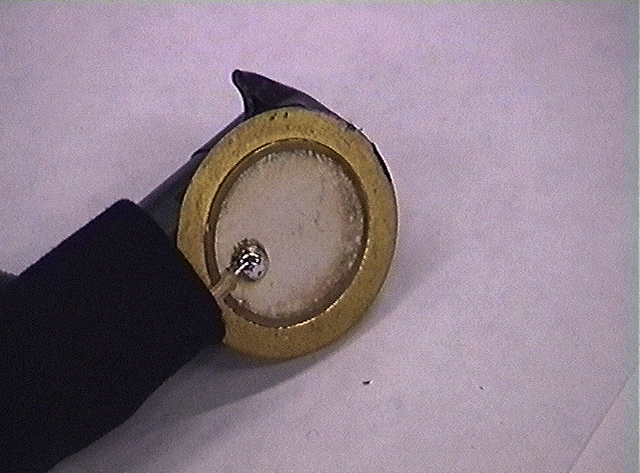
Two alternative controllers were developed along with the Squeezables. One uses shaking while the other senses the overall human body movement, to complete the little "trio-able" of "squeezable", "shakable" and "swimmable" !
The Digital Maracas [WebVideo2] is an alternative controller that utilizes the shaking movement of the hands. Anyone will be able to guess that it uses an accelerometer to measure the acceleration of the maracas. Typical one-axis accelerometers cost at least five US dollars each. They are housed in little metal casings with leads like integrated circuit (IC) chips. Two major drawbacks of these conventional accelerometers are that they all require a power supply and their output voltages are very small. Besides these disadvantages, one needs to build a circuit around the accelerometer in order to get useful signals.
A typical piezo transducer (Fig. 5.1) is used as an output device in pocket pagers, cellular phones and the beepers in toys. It is essentially a very compact speaker made by sandwiching piezo crystals between two different metal plates (Fig. 5.2). Since the two metal plates are coupled together only by the piezo crystals, the outcome of this packaging made it possible for the Piezo transducer to sense mechanical acceleration. These crystals can be compressed and expanded when one of the plates is secured at the end of a moving stick. When one swings the stick, the other metal plate that is not on the stick, due to momentum, compresses and expands the piezo crystals (Fig. 5.2), creating a voltage like a little generator. This is known as the piezoelectric effect. Unlike a conventional accelerometer, it does not need any power.


Using a nylon rod, the piezo transducer is secured on one end by means of tape and glue. Two wires run along the rod from the transducer to the other end (Fig. 5.3). The piezo transducer can then be covered by a decorated foam ball to look like the shell of a maraca (Fig. 5.4).
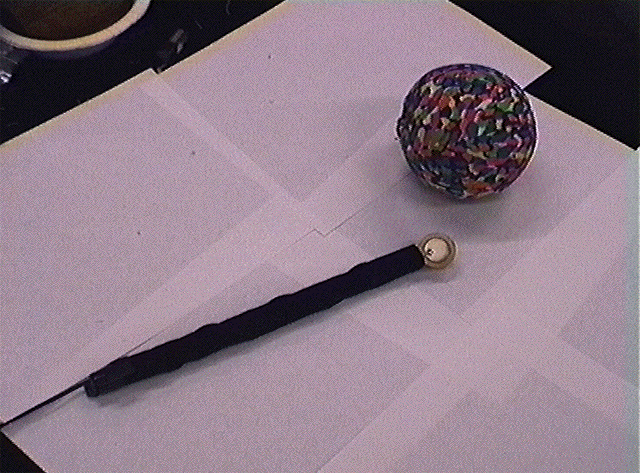
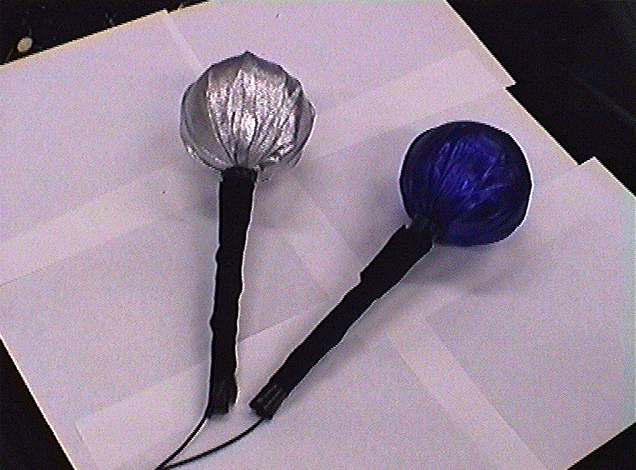


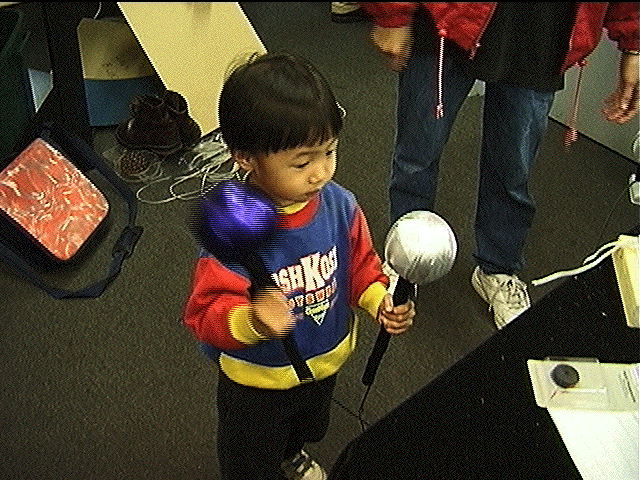
Fig. 5.7 My son, Cheng Hann, playing with the Digital Maracas
The output from the Digital Maracas can be used to trigger a table of sounds or used as a control parameter to make an effects processor apply different amounts of effects to another sound. In Fig. 5.7, a PVC tube is used to house a microphone and a piezo transducer. Using different resonators (Fig. 5.8) like a coconut shell or a plastic light bulb housing, and also different types of beans, various kinds of sound textures can be produced. The microphone will pick up the inner acoustics of the resonator and the piezo transducer controls the amount of effects to add into the original sound, producing a rich variety of sound from raw to full effects.
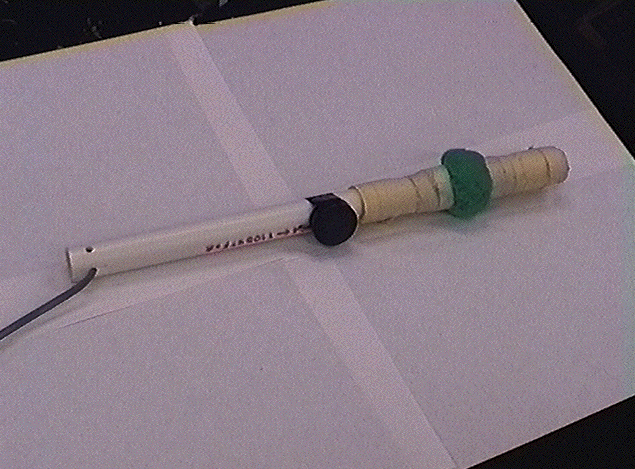
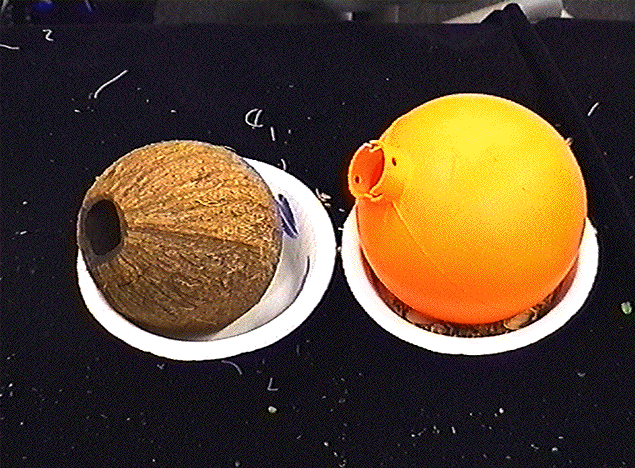
Fig. 5.8 Coconut Shell and Plastic Bulb Housing as Resonators

Fig. 5.9 My son, Cheng Hann, playing with one of the Combo Maracas
With the collaboration of Gil Weinberg, I constructed an initial, scaled down version of the Musical Play Pen using a plastic ice cream tub. Gil suggested using M&M's chocolates to fill up the tub (Fig. 5.10). The tub is essentially a rough prototype to demonstrate Gil's idea of "composing through play." It has eight 18-mm Force Sensing Resistors (FSRs) (Fig. 2.4). When the hand of the player is immersed into the pool of M&M's and moved, the M&M's will strike against the wall of the tub and also the FSRs. This is mapped to a table of notes in Max and played.
After this prototype, a bigger version of this interface was built using a play pen filled with more than 400 pieces of ball-pit balls. Using the same sensor as the Digital Maracas, the Musical Play Pen has four piezo transducers, one at each corner of the play pen, forming four quadrants of resolution. The piezo transducers are housed in the top ball of a chain of 3 balls (Fig. 5.11). The reason for chaining up a few balls is to prevent limbs from getting caught by the wires. When the balls in a particular quadrant are moved, only that region will be activated. If a child is in the middle of the play pen, he can use his limbs to trigger the different regions at different times or all the regions at once.
Fig. 5.12 shows my 2-year-old son, Cheng Hann, making music in the Musical Play Pen. [WebVideo3]
The circuit used for the piezo transducers is the same as that of the Digital Maracas (Fig. 5.5) with their outputs connected to the I-Cube digitizer controlled by a computer. The values taken are then used to play a table of notes. The music or sound comes from two speakers that are actually inside the play pen.
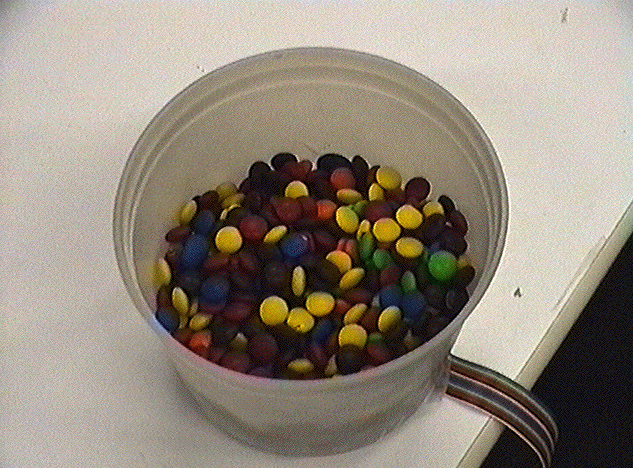
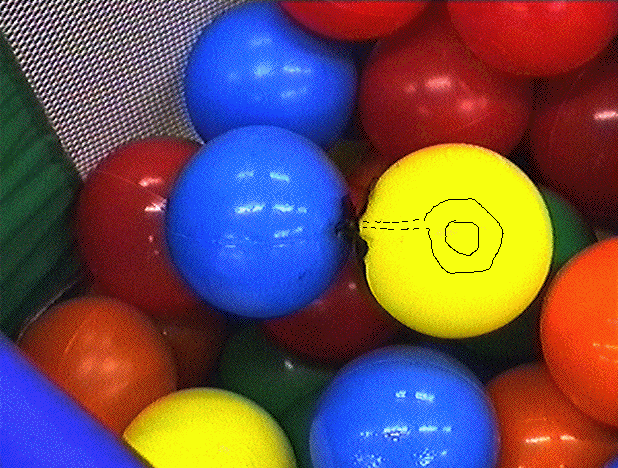
Fig. 5.11 Sensor location in the top ball
